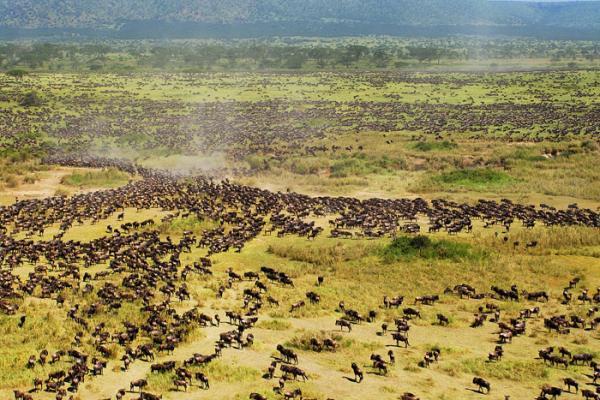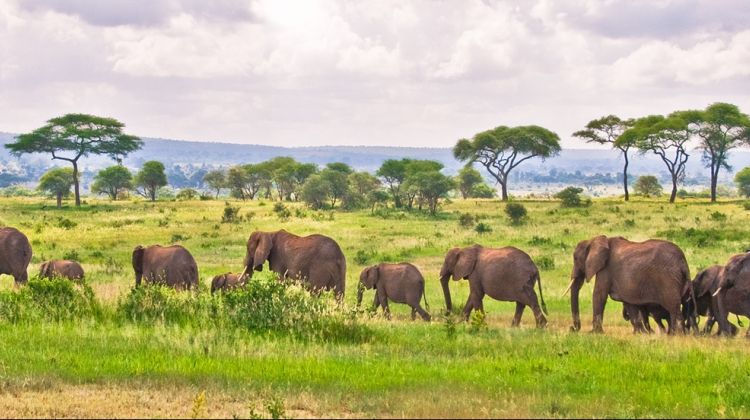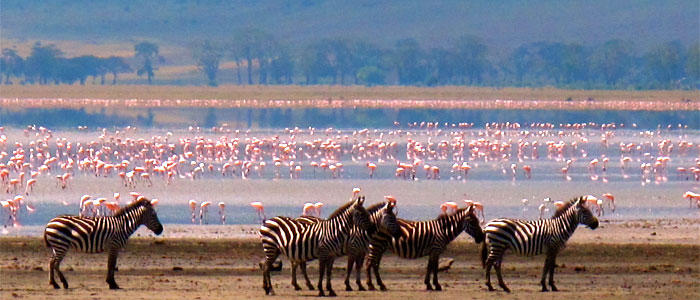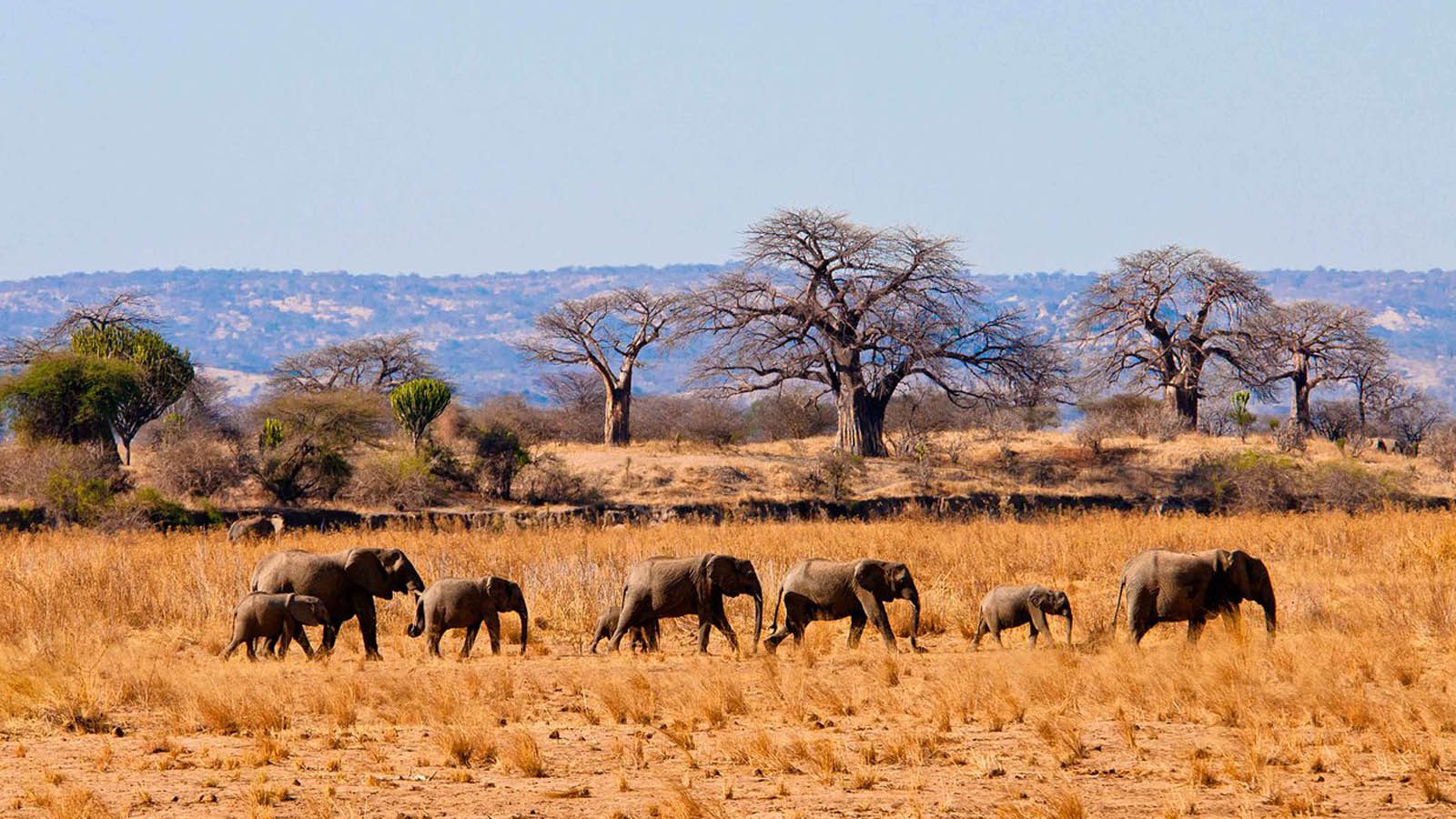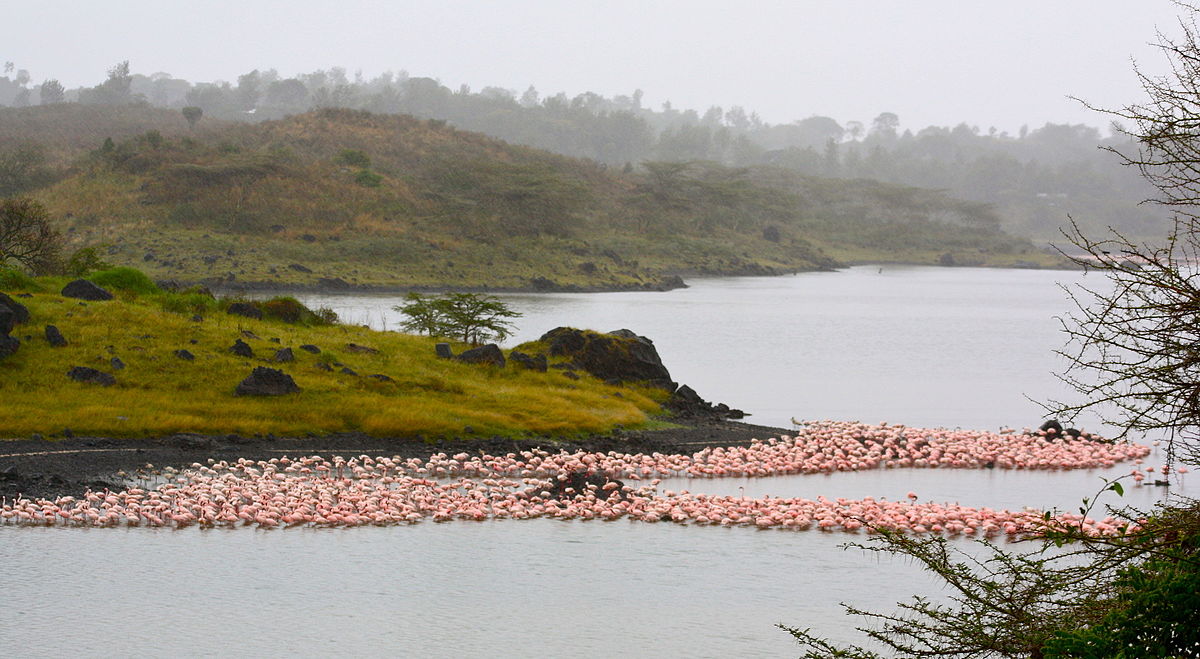The Serengeti Park in Tanzania covers an area of 14 763 sq km, but the greater Serengeti – roughly 30 000 sq km in extend, incorporates several other reserves, notably the Ngorongoro Conservation Area and Kenya’s Masai Mara National Park. The park is a picturesque grassland of awesome beauty and size. Derived from the Masai phrase “Siringet” meaning “endless plain”, the Serengeti Plains ecosystem is defined by an ancient migration route, followed annually by around two million animals.
The national park can be divided into 3 major wildlife animals vegetation areas: In the south-eastern area are the open grasslands, to the north the open woodlands and in the west a mosaic of grass- and woodlands. The lion is one of this African park’s main attractions, as there are about 2500 of these animals in the Serengeti Plains ecosystem. This is the biggest concentration in the world of Africa’s largest predators.
